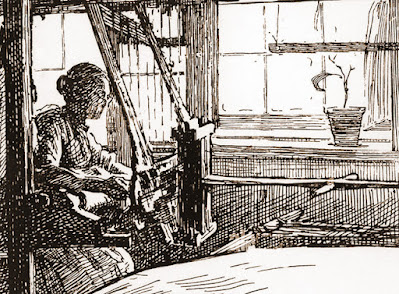Michelle Yeo---an oasis
The landscape for us fans of reproduction prints has been pretty austere lately but I see signs that it's no longer the Sahara out there---- More like a dry savanna with occasional seasonal rain showers. And Fall is the season.
Michelle Yeo's collection:
Checking out what's in shops now, what's coming and what might be on sale from last year I've come up with suggestions for accurate reproductions 1800-1880 that you better buy.
Michelle has been working with Henry Glass and has a couple of
collections reflecting early-19th-century prints. This one seems to
be from Lille/Buckleberry Chintz.
MUST HAVE for Chintz era design
I can't quite figure out what these are named. Look for
Michelle Yeo
Lille
Buckleberry Chintz
and Bannard Hills (an older line?)
And tell your shop owner she has got to get some Yeo!
From Bannard Hills
Thanks, Michelle (and Henry)
For your early reproduction masterpieces there's also something fairly new. Jane Austen at Home seems to be from her Chawton House museum. I've found references to several collections named after the novels.
Coming soon is this patchwork print from Chawton.
Ask your shop if they have any Jane Austen at Home or
do a web search for
Jane Austen at Home Fabric
Another fall collection in shops soon is French General's Antoinette.
Antoinette's chintz to cut out for Broderie Perse? With a matching background color.
Moving mid-century: Check out Betsy Chutchian's Moda collection
Lydia's Lace
MUST HAVE
Trailing Vines from Lydia's Lace
Pam Buda's Plumberry II has all those purples that were so popular even though most of them faded. Pam's won't.




















































